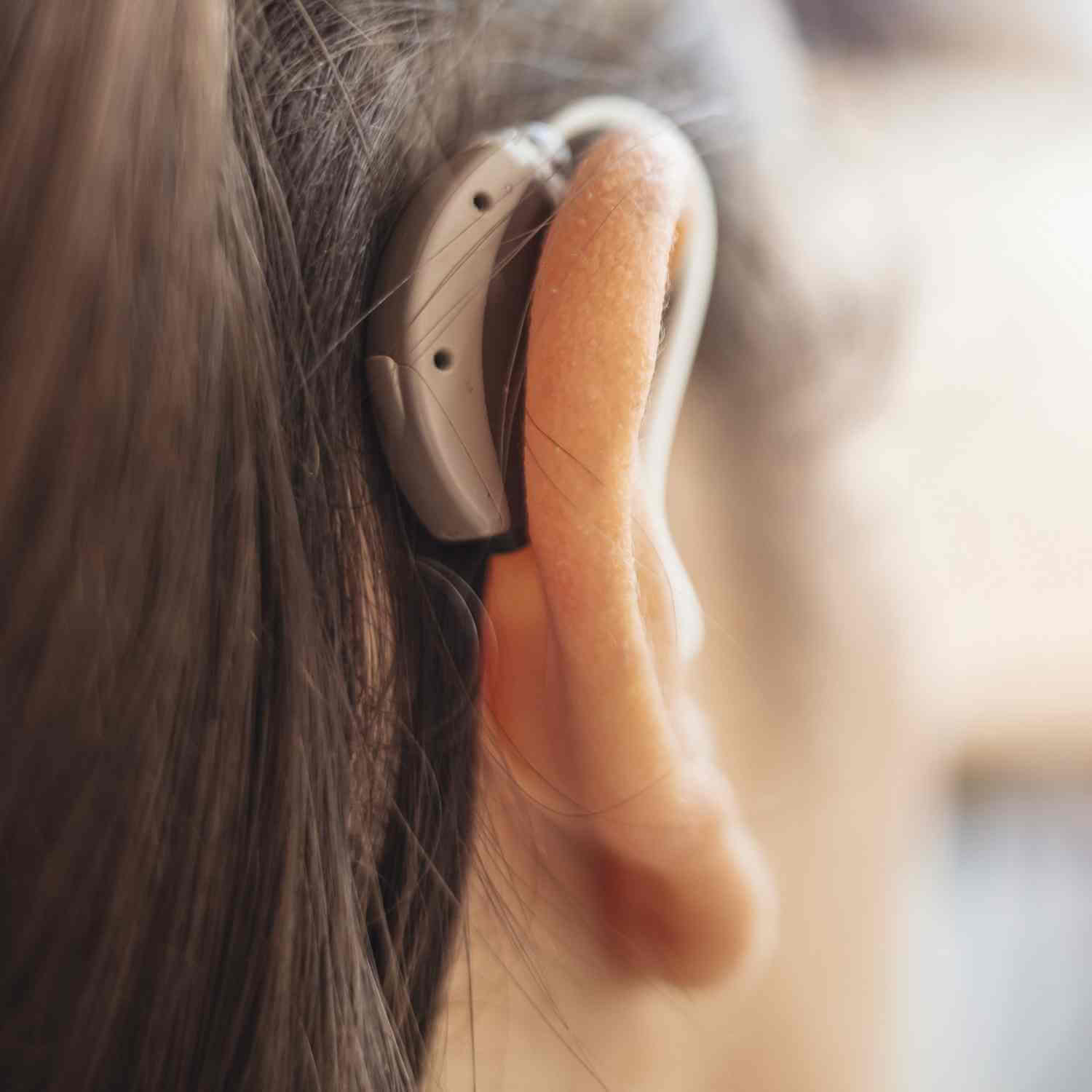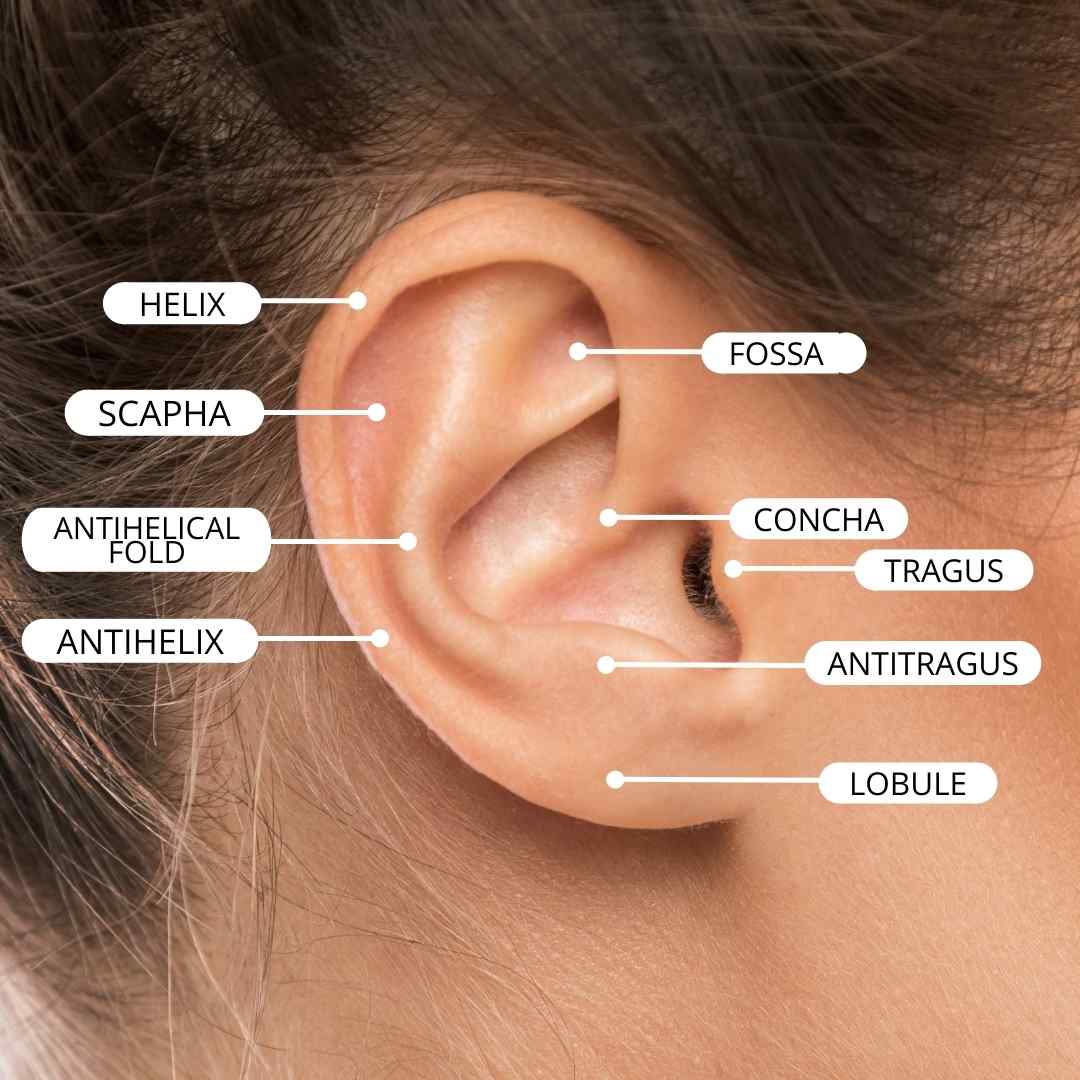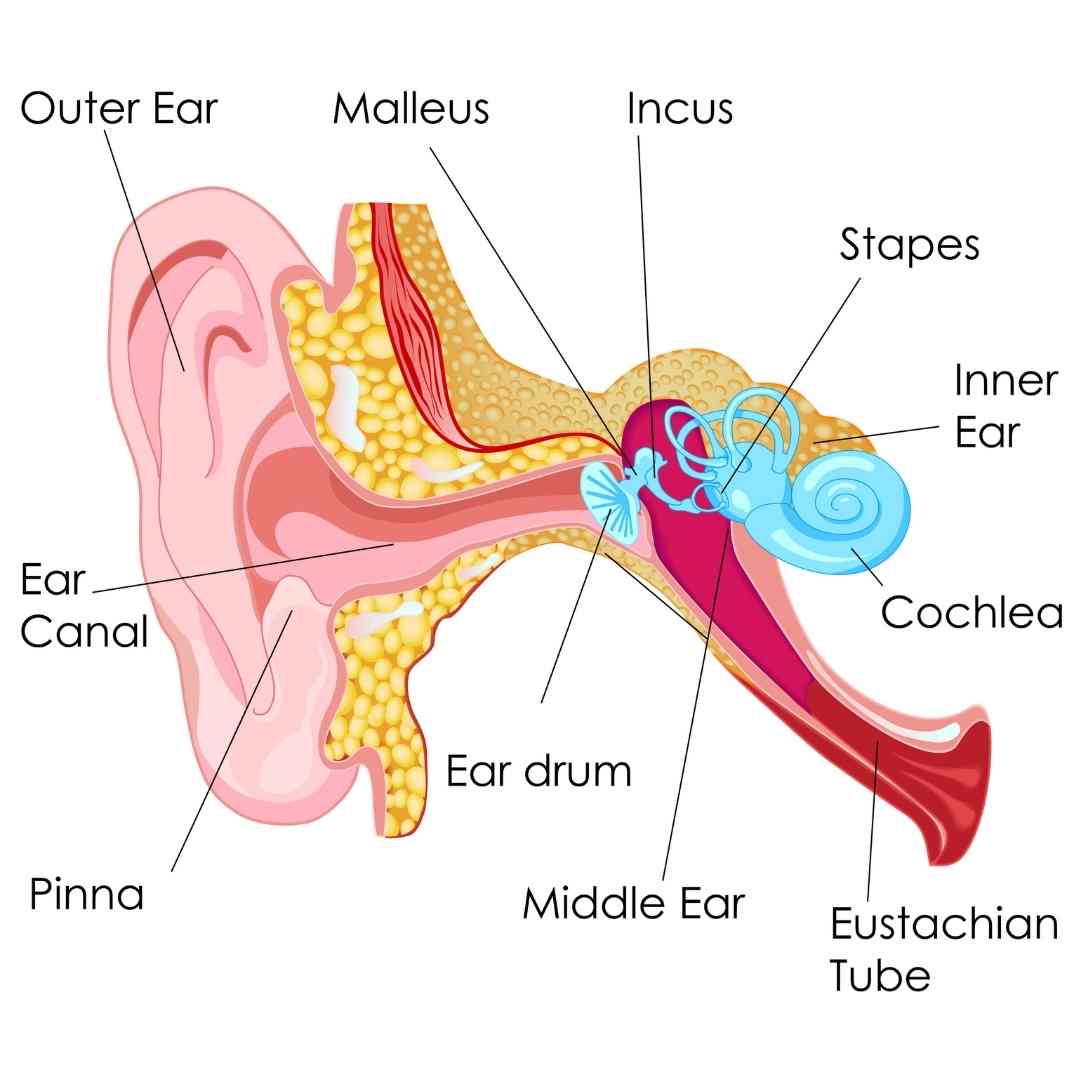


Anatomy of the ear
The ear can be considered in three sections: the external ear (the part we see), the middle ear (where the eardrum is), and the internal ear (everything behind the eardrum). The external ear is composed of cartilage and tissue. The helix, scapha, and triangular fossa compose the upper outer ear. The earlobe is called the auricular lobule and does not contain any cartilage (this is why it’s soft and lacks structure). The earlobe receives a large supply of blood and nerve endings making it a potentially sensitive area of the body for some individuals.
Ear size and ear shape are primarily determined by genetics. It is important to consider the size and shape of the head in addition to hair style when determining ear appearance as the overall aesthetic of the upper body can be influenced by multiple factors. As we age, research shows natural changes in collagen typically cause the ear circumference to become larger. 1


Comparison + Social Media
“Normal is a subjective judgment with cultural bias. In Western society, popular comic cartoon characters often are endowed with large, prominent, or protruding ears. A child with prominent ears is often the target of invidious comparison to such characters and must carry the burden of an “unacceptable” evaluation from peers, a burden that may be carried into adulthood. 2
In times of social media we are comparing our own features more than ever before. We tend to think that all these pictures and faces are the way we are supposed to look like. In fact there are so many different ear shapes and sizes that comparison is going to make us unhappy most days. People with prominent or protruding ears often wear longer hair or hats to hide their insecurity.
Hearing loss
Approximately 40 million Americans struggle to hear. This includes children, teenagers, adults, and seniors. Hearing loss can be caused by aging, as the cells in your ear experience a lot of wear and tear over the years. Hearing loss can also be the result of noise, and noise induced hearing loss from exposure to dangerous sounds in our environment account for the rise in rates of hearing loss among younger people.
When you struggle to hear, or ask people to repeat themselves, you’re also worried that people will think you’re less intelligent, or didn’t understand the meaning of what they said rather than not hearing the words themselves. Unlike a physical disability, hearing loss is invisible, and it’s hard to notice right away if someone is struggling to hear. If you mishear a question and answer inappropriately, most people won’t realize that you didn’t hear the question correctly. 3
Fact Check




Celebrities with prominent ears
Our personal features define us. By changing them we’d look a whole lot different. Here are a few celebrities that we know and love with prominent ears:

Kristen Stewart

Daniel Craig

Channing Tatum

Kate Blanchett
Stories about ears


Information / Text Sources
Anatomy + Different ear shapes
1) https://aedit.com/concern/ear-shape
Social Media
2) https://emedicine.medscape.com/article/1290275-overview
Hearing Loss
3) https://myhearingcenters.com/blog/why-are-people-ashamed-of-hearing-loss/
Fact Check
4) https://aedit.com/concern/ear-shape
5) https://zurego.com/pages/otostick-baby-medical-study-proves-effectiveness
6) https://lb-aps-frontend.statista.com/chart/18071/most-popular-plastic-surgery-uk/
